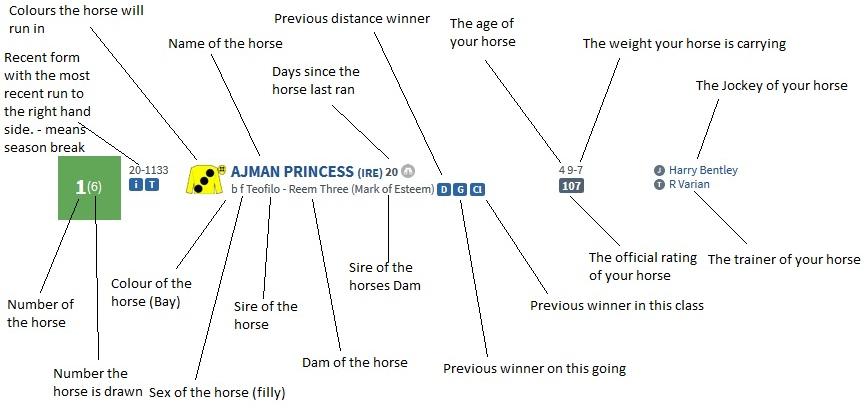
Join our well-versed football connoisseur, Liam Johnson, as he unveils can't-miss corner betting insights. Each of the expert corner predictions listed here is completely free of charge.
For those new to the pulse-pounding world of horse racing or contemplating diving into the excitement, understanding how to interpret the form is paramount. This knowledge forms the backbone of expertise in racing circles, and if you're aiming to master the art of wagering, being proficient in reading the form is crucial.
Much like fans of other sports scrutinize team stats before making a bet, race enthusiasts rely on the form book. It's an essential tool in any bettor's arsenal, and mastering it is the key to gaining an edge.
While the form won't always serve up all the answers, a keen understanding of it can guide you in making savvy bets and refining your selection process. In the grand scheme, informed decisions will boost your chances of turning a profit on your equestrian wagers, making it worthwhile to invest some time in form study. watching horse racing live Decoding Horse Racing Form at the Bookmakers'
Most bookmakers feature these data on their platforms, eliminating the need to buy racing prints or wander the web searching for the details you need. best horse racing bookies In the illustration below, various forms of displaying such data are portrayed; while it might differ from what you're familiar with, rest assured the crucial information remains consistent.
We've annotated sample entries to illustrate the meaning behind each component. These don't appear on a bookmaker's race card, but feel free to bookmark this guide if you need a refresher.
Though it might look a tad intricate at first glance, a breakdown of what's included in a form card is coming up next to help you grasp the nuances of reading it independently. You may also find our other resources helpful for further learning.

We'll delve into each section from left to right, explaining every detail thoroughly. guide to horse racing jargon if any of these terms are new to you.
This one's straightforward—it's the number the horse will sport during the competition.
Relevant solely in flat races, this represents the stall number your horse will bolt from. Its significance spikes over short distances and on narrow tracks.
Crucial information in the form displays recent performances of the selected horse, with the number on the far right indicating their latest outing. This can reveal insights into their condition and number of races this season.
The dash signifies a seasonal hiatus. For instance, a form reading 6314-53 implies the horse had two outings this season, securing 5th and subsequently 3rd, suggesting an upward trajectory in form.
A '0' in the form suggests the horse didn't make it into the top 9 finishers. While not encouraging, there could be mitigating factors worth considering.
These are the colors to watch for when your race rolls around.
This is the name you'll be shouting for as the race unfolds.
Identifying your horse's color, the most frequently found options are listed below.
Here’s how you can determine the sex of your horse; find it among the following.
B – Bay
Ch – Chestnut
Br – Brown
Gr – Grey
This indicates the horse's sire. Enthusiasts keen on breeding pay close attention to this detail.
G – Gelding, a gelded male horse
C – Colt, a non-gelded male horse
F – Filly, a young female horse
M – Mare, an older female horse
Highlighting the mare as the dam of your horse, another point of interest to breeding fans.
This displays your horse's dam’s sire. A strong lineage is a pivotal aspect in horse racing, especially for those focused on breeding.
This indicates the time lapsed since your horse's last race. Generally, a regularly active horse is better conditioned than one returning from a layoff.
Displays past victories at specific distances, class levels, going, or courses.
D – Indicates a prior win at this distance
Cl – Signifies a previous class triumph
G – Highlights a win on this type of ground
C – Shows a victory on this course
A horse might showcase multiple letters, signaling success across various achievements—for instance, CDGCl would mark dominance across all fields, making it an attractive option for bettors.
Here's your horse's age. Racing starts at 2 years old, with opportunities to compete with older horses growing as they age. By 4, races mostly open up to both 3-year-olds and older contenders.
This section lists the weight carried by the horse, composed of the jockey plus added weight to achieve the designated figure on the race card. While some races equalize weight across entries, handicaps adjust weights relative to each horse's prowess.
Official ratings reflect a horse’s caliber. In handicap scenarios, weights correspond to official ratings, where each point equates to a pound. So, in a 70 vs 75 scenario, the latter carries 5lb more.
Identifies the jockey taking the reins for this race.
Names the trainer honing the horse's skills.
Interpreting the form guide may seem daunting initially but uncovering its secrets is the path to savvy betting. Recognizing which details count and how to process them transforms you into a sharper, bettors.
At WhichBookie, we're dedicated to delivering top-notch content and exciting offers daily. Please note, some links on this page might compensate us.
